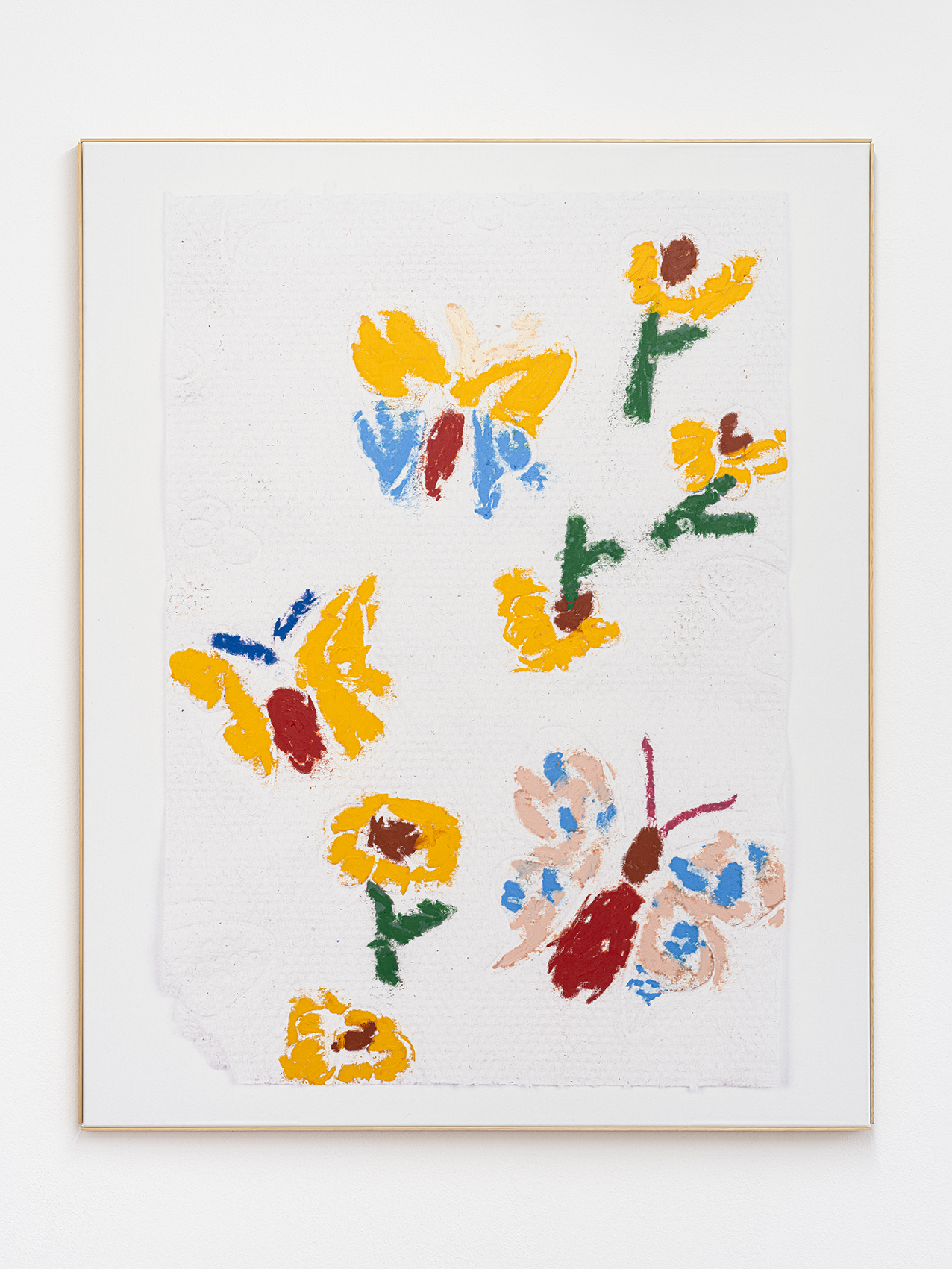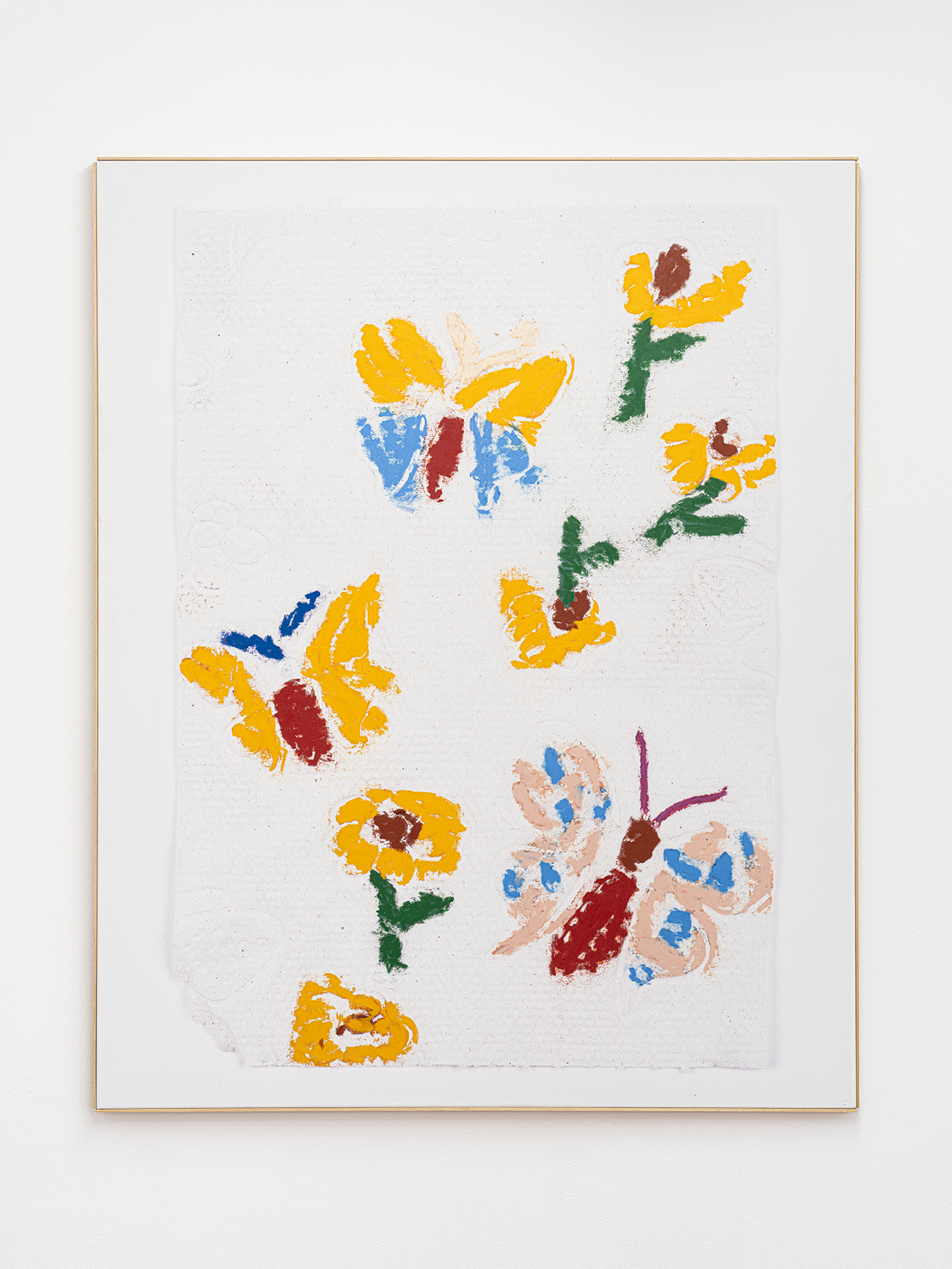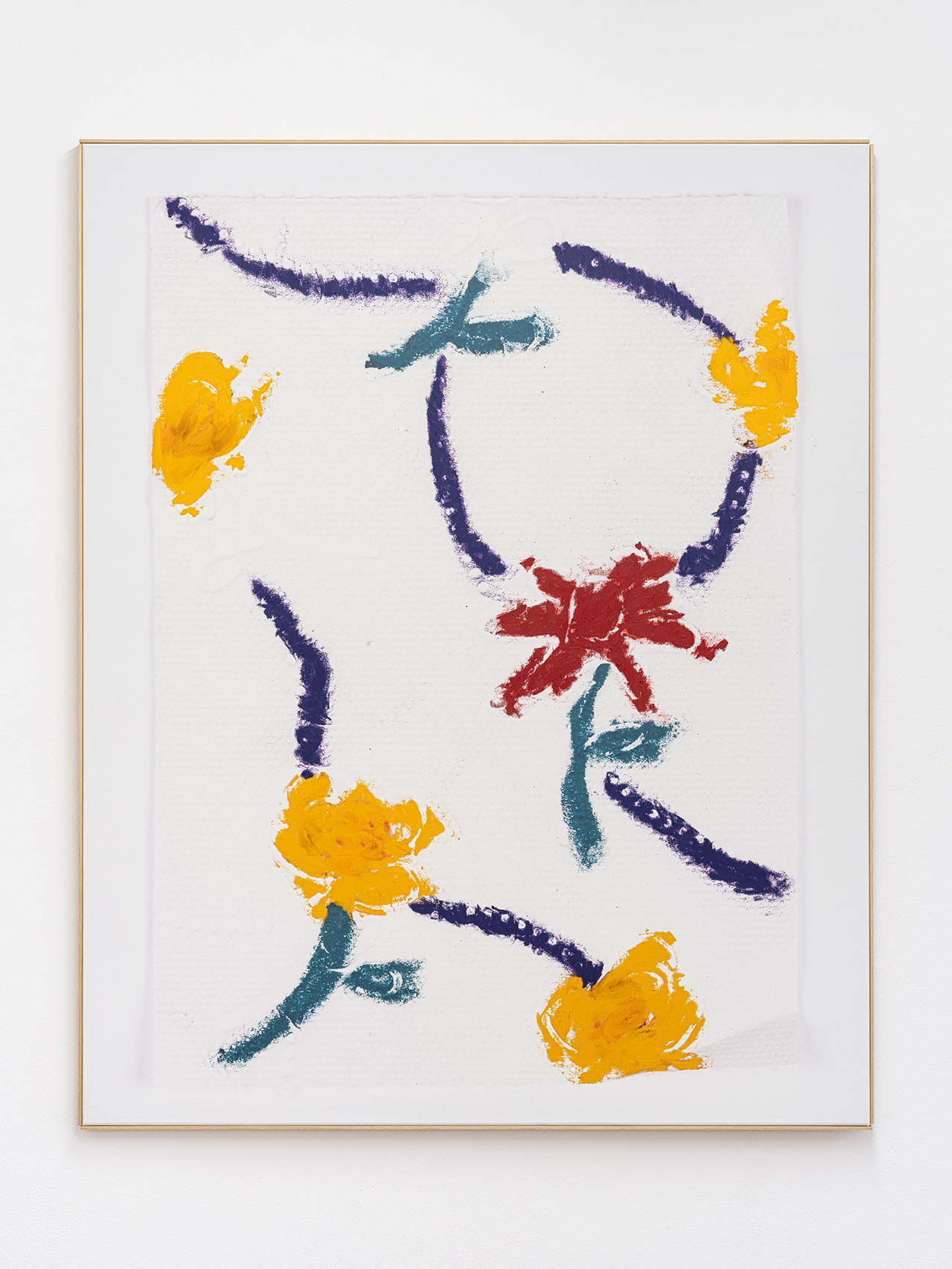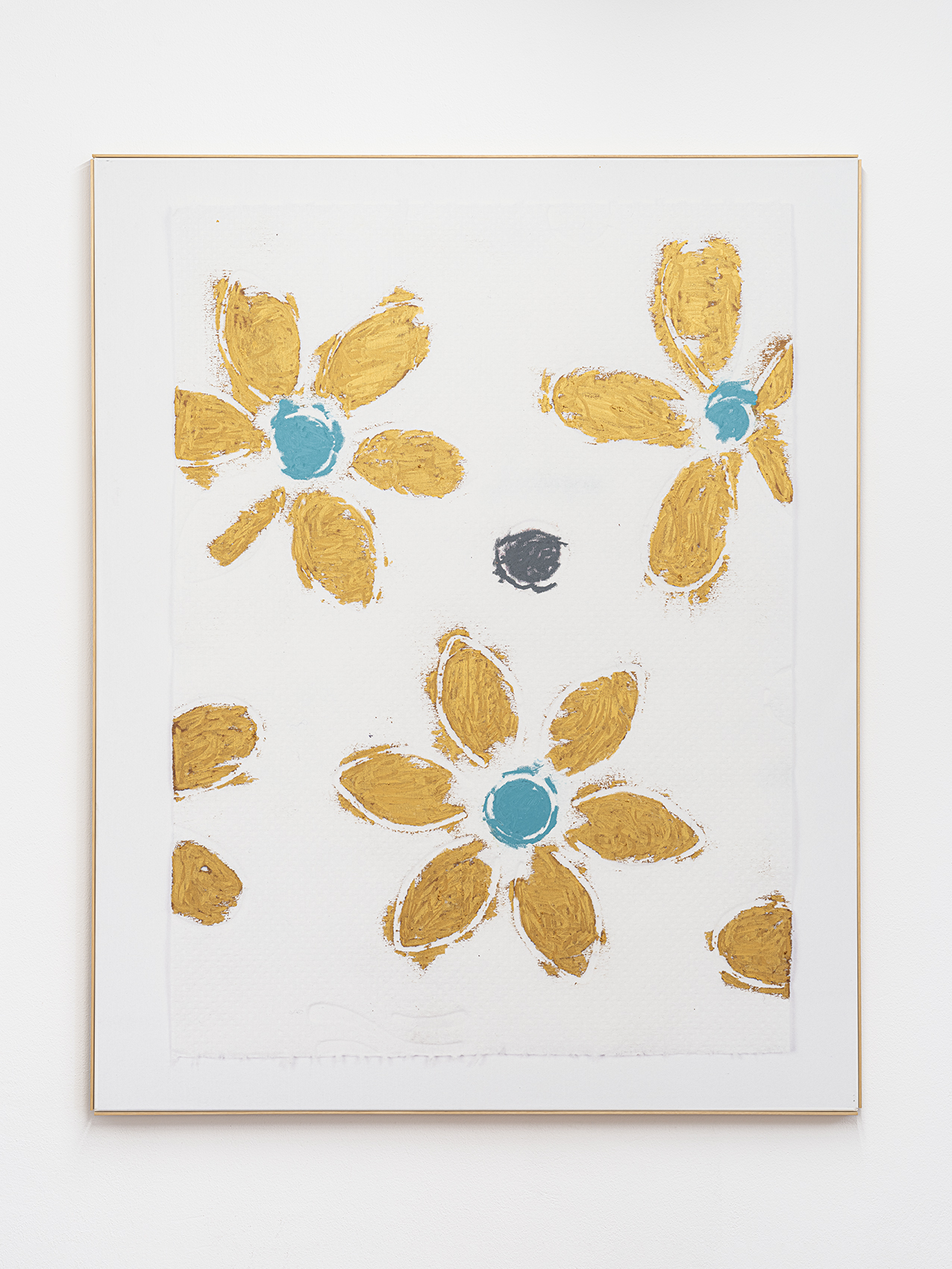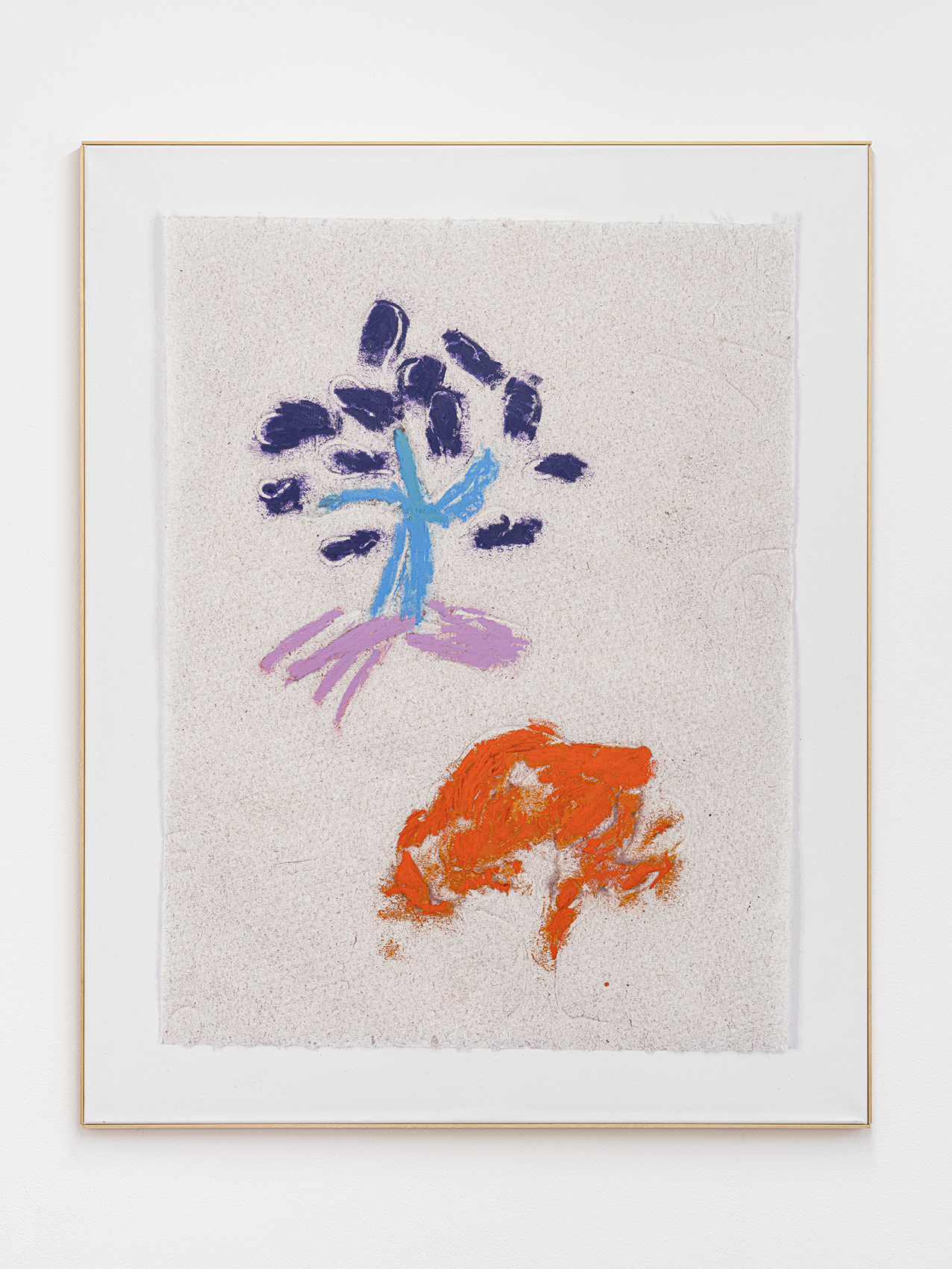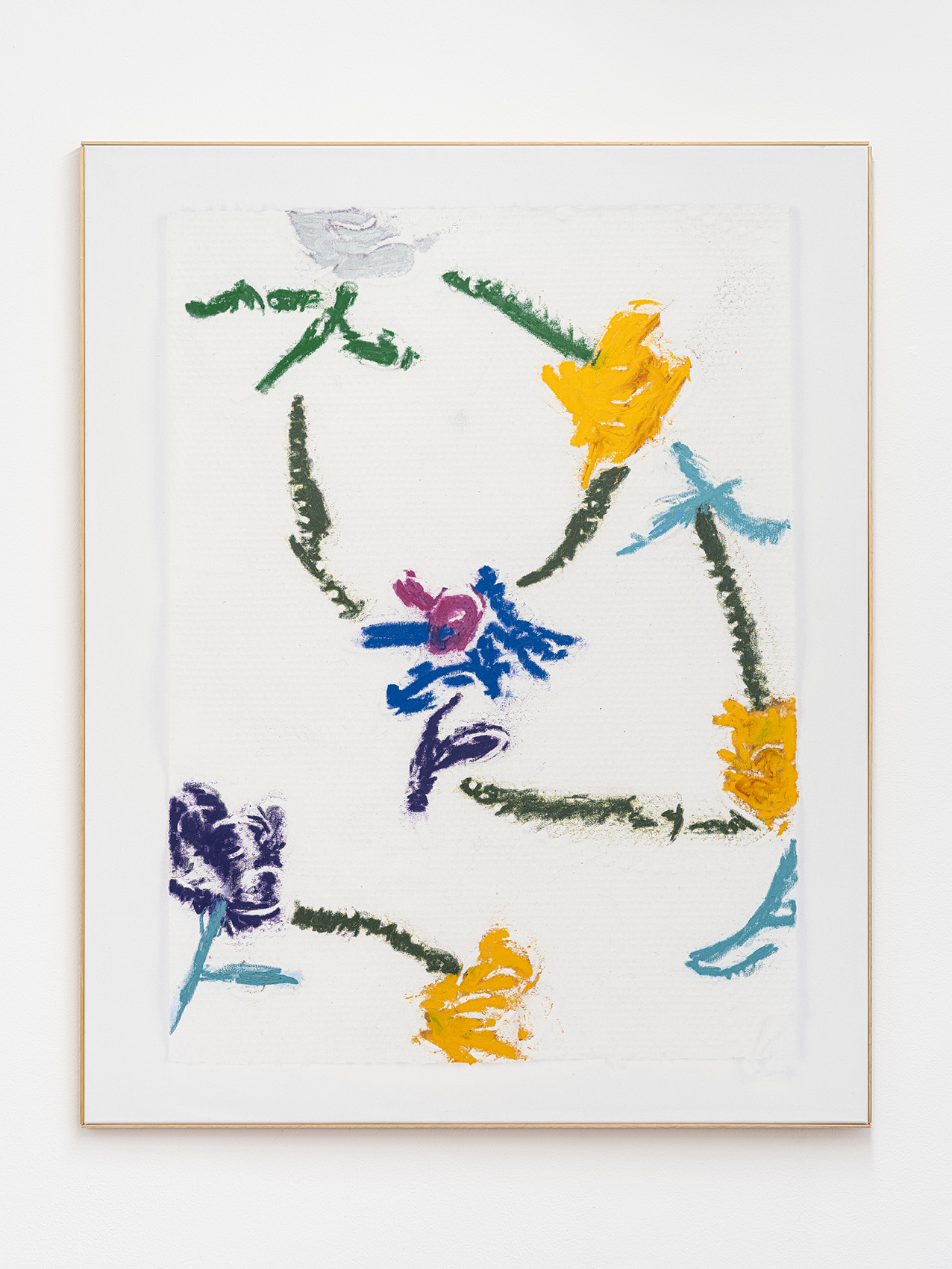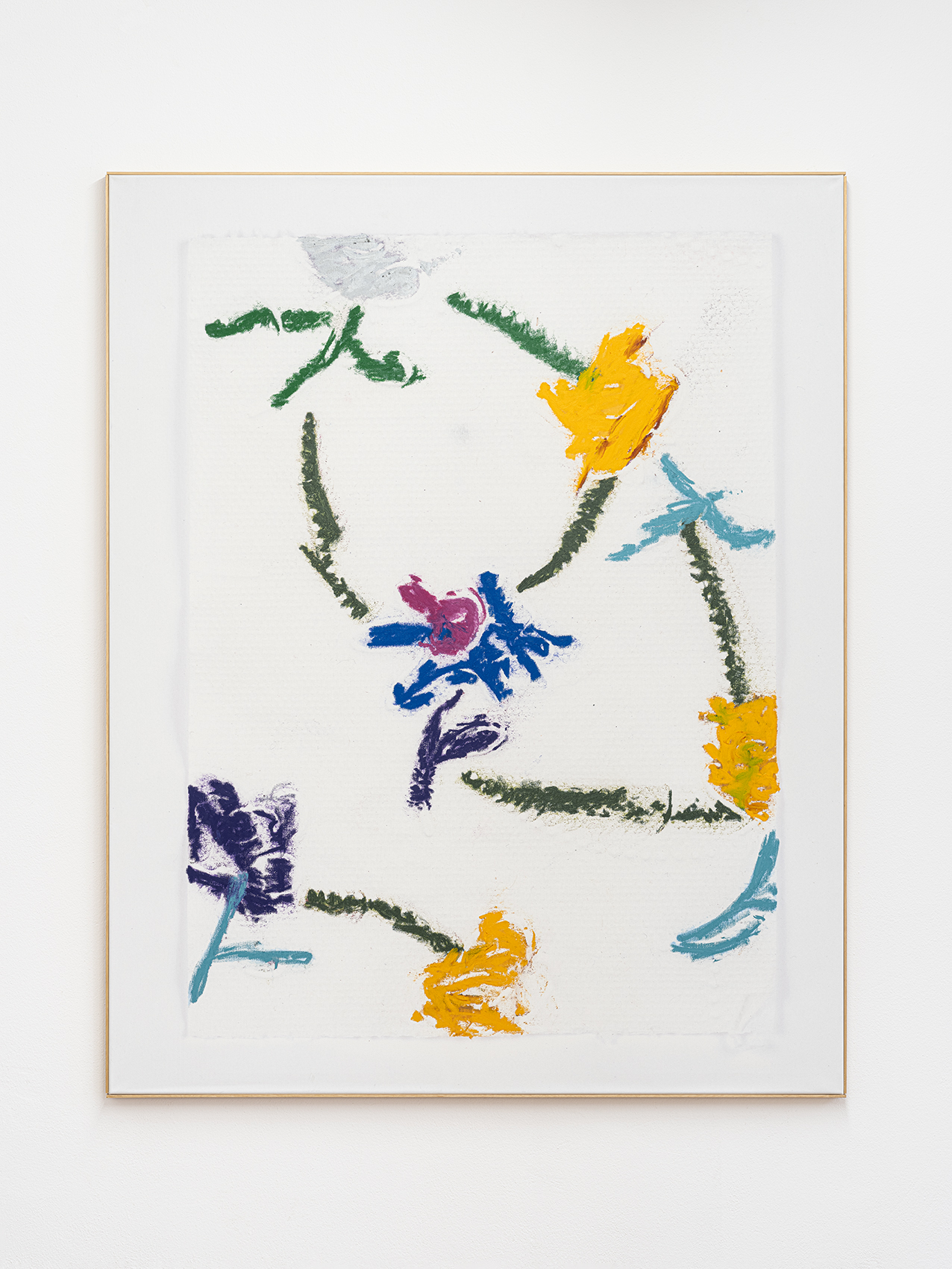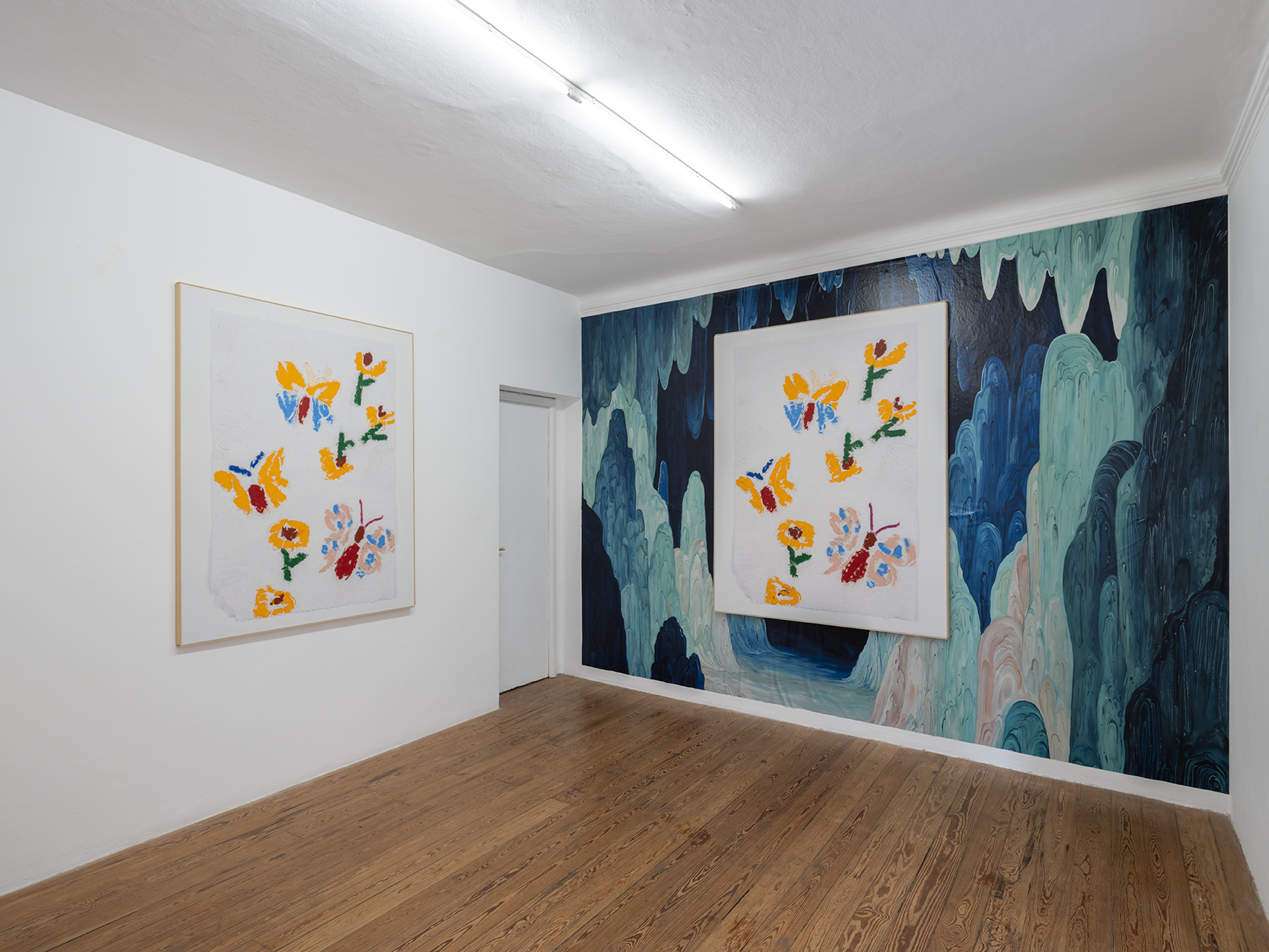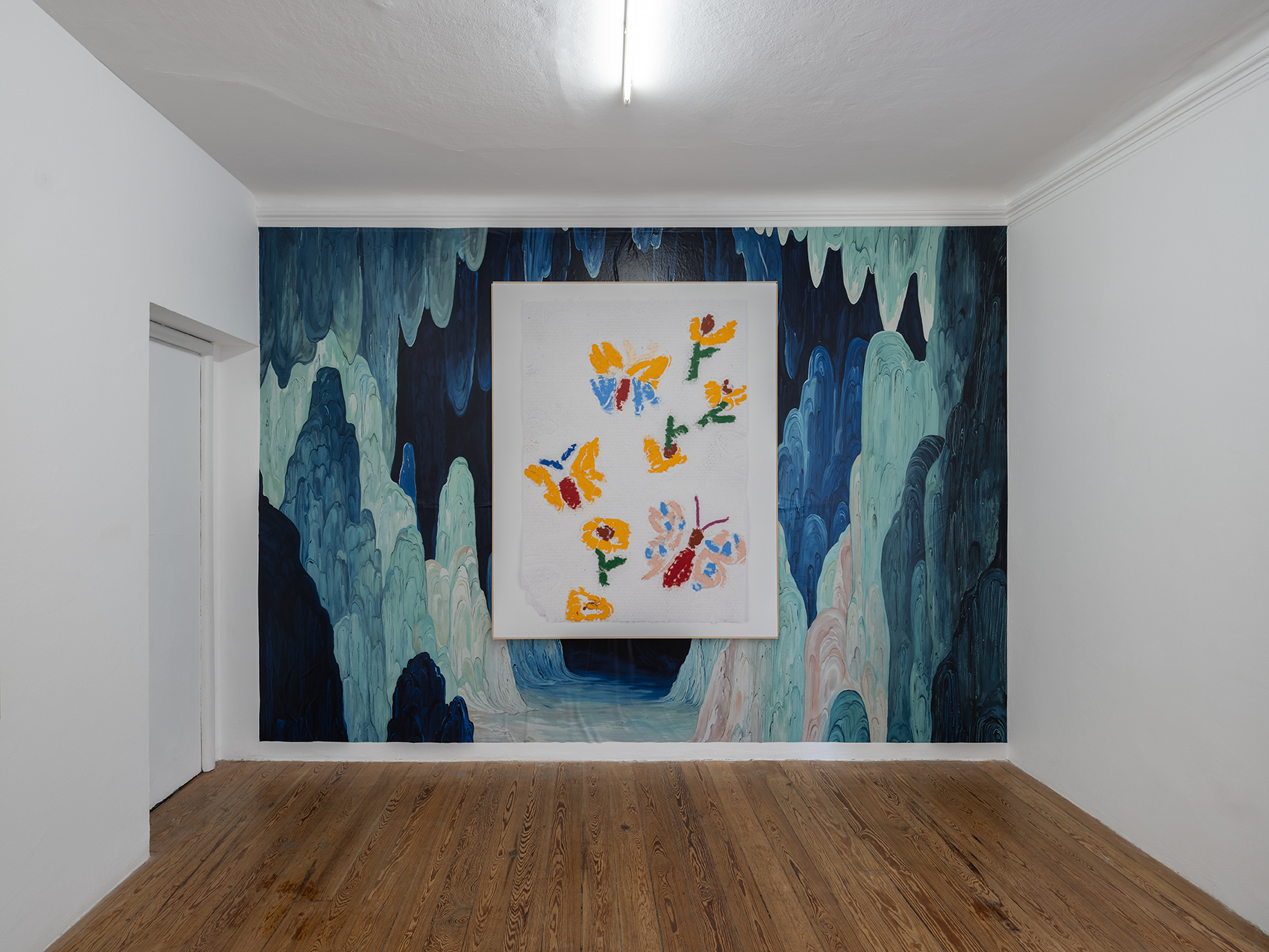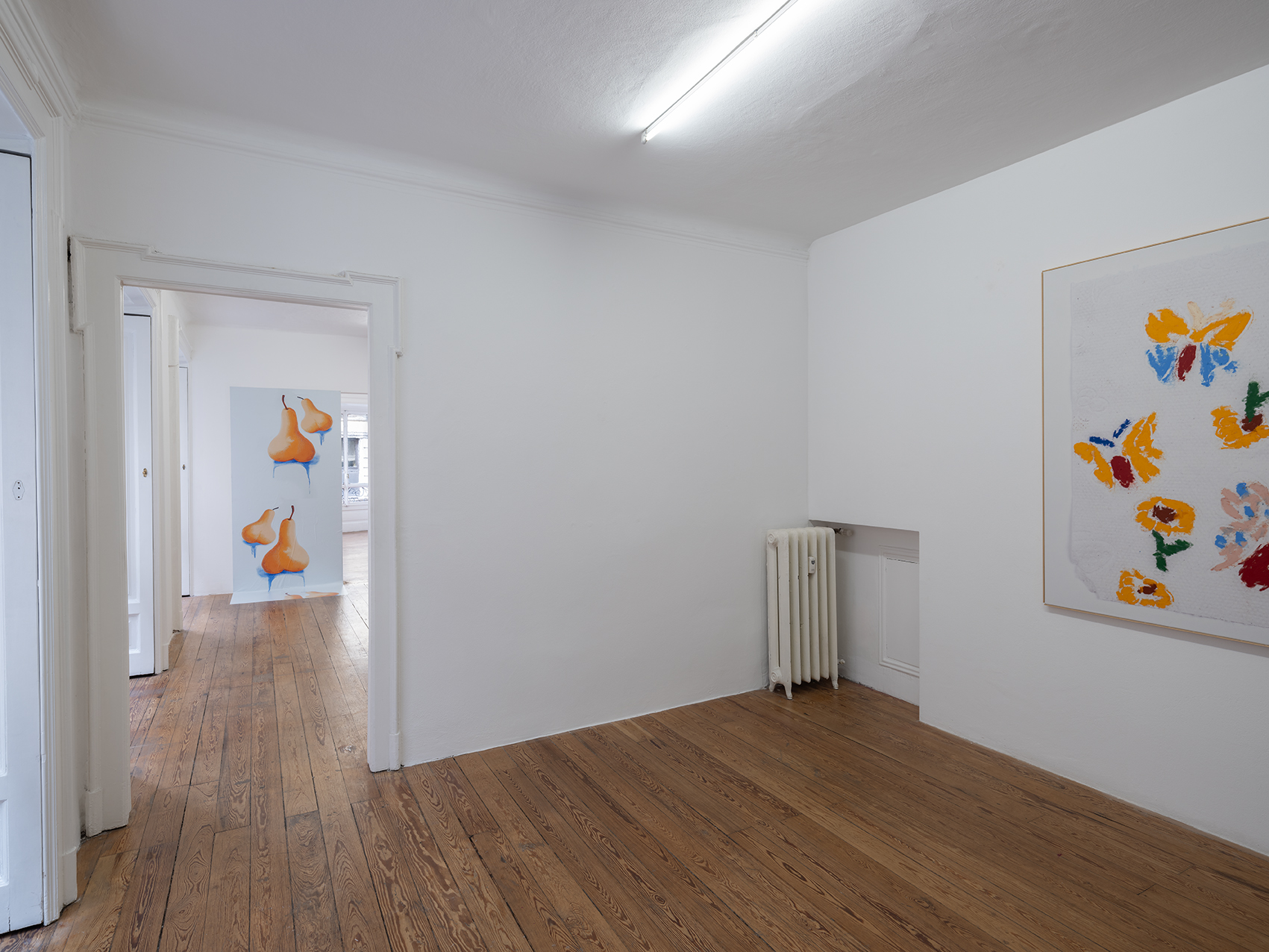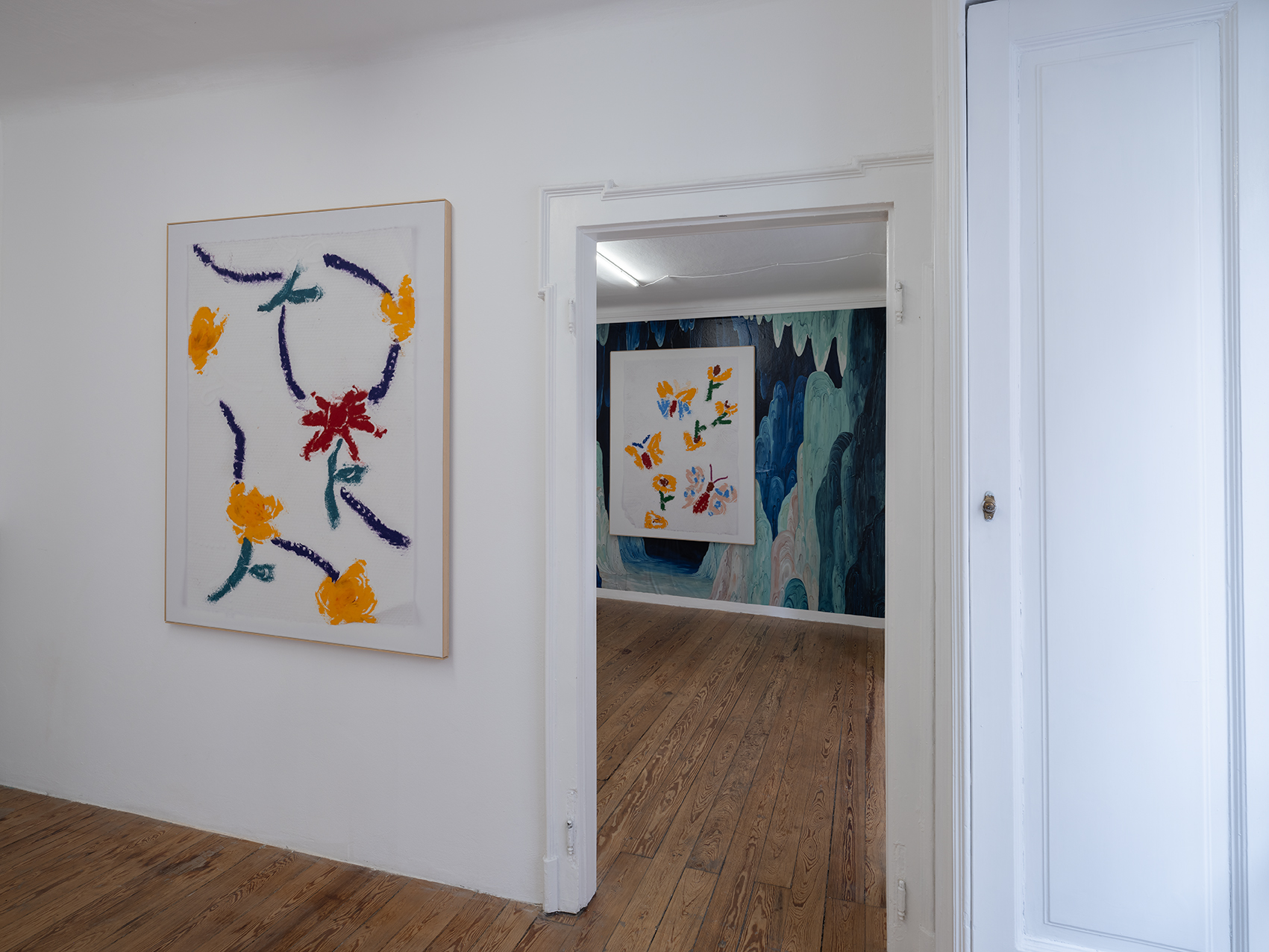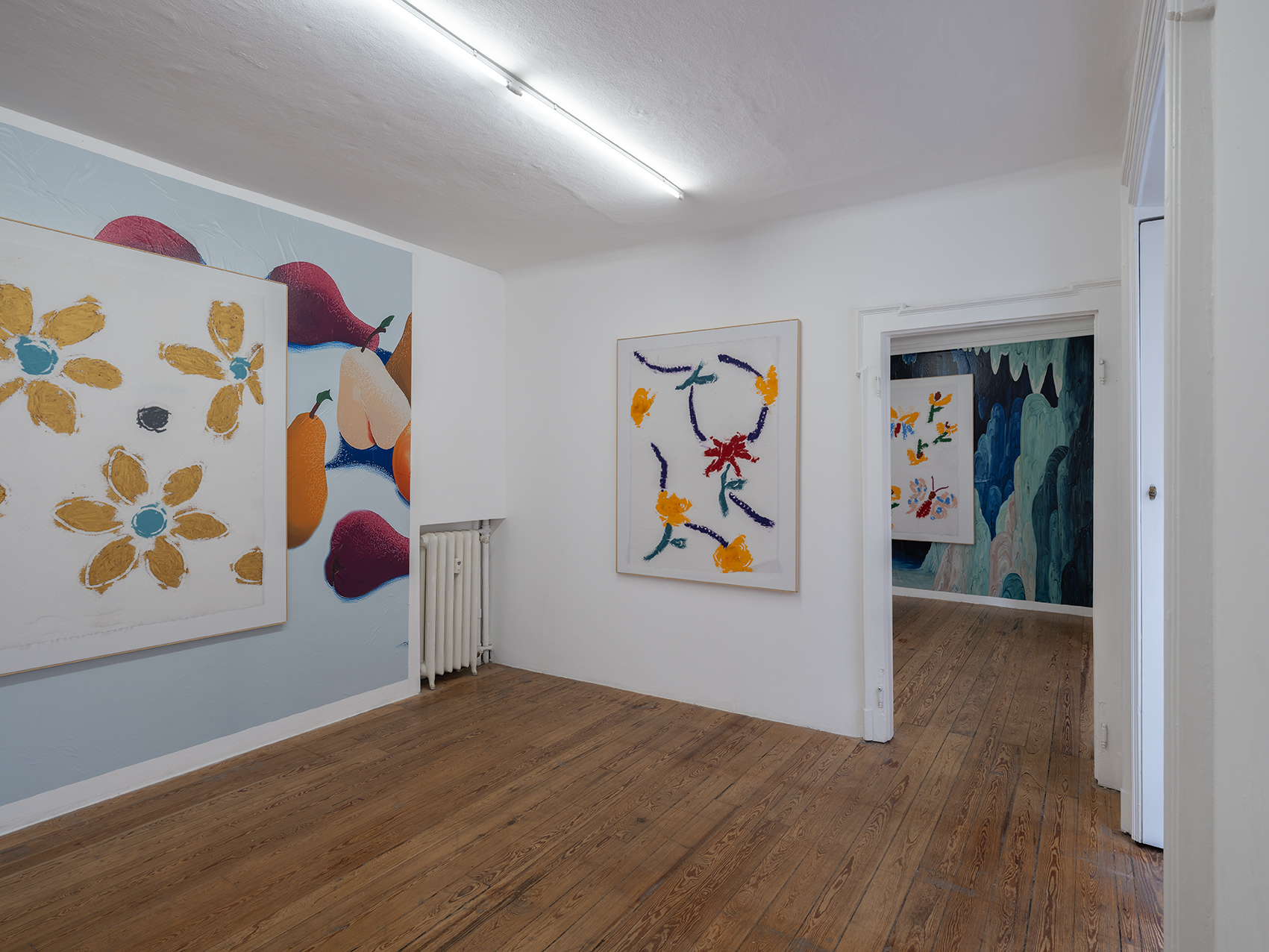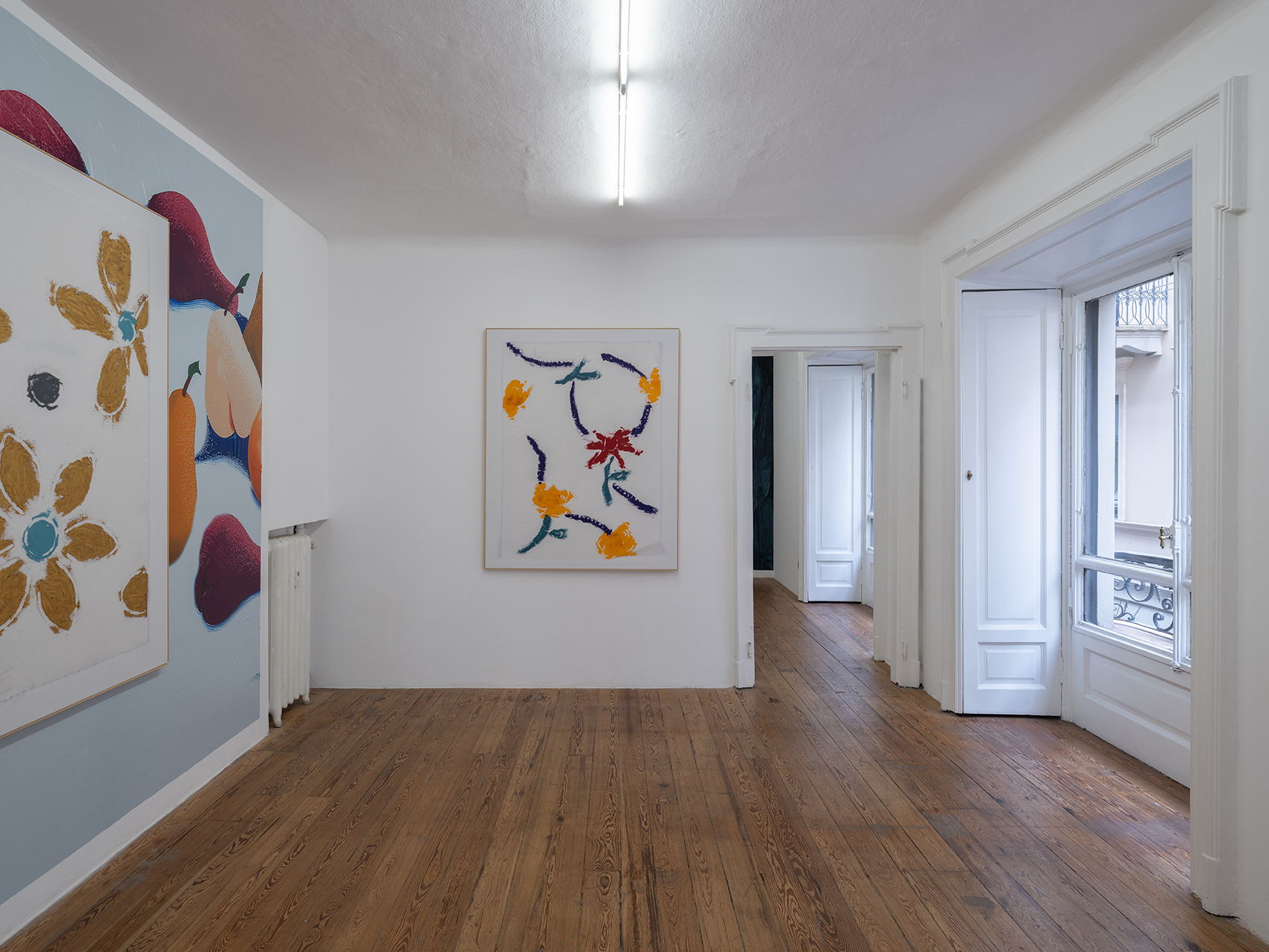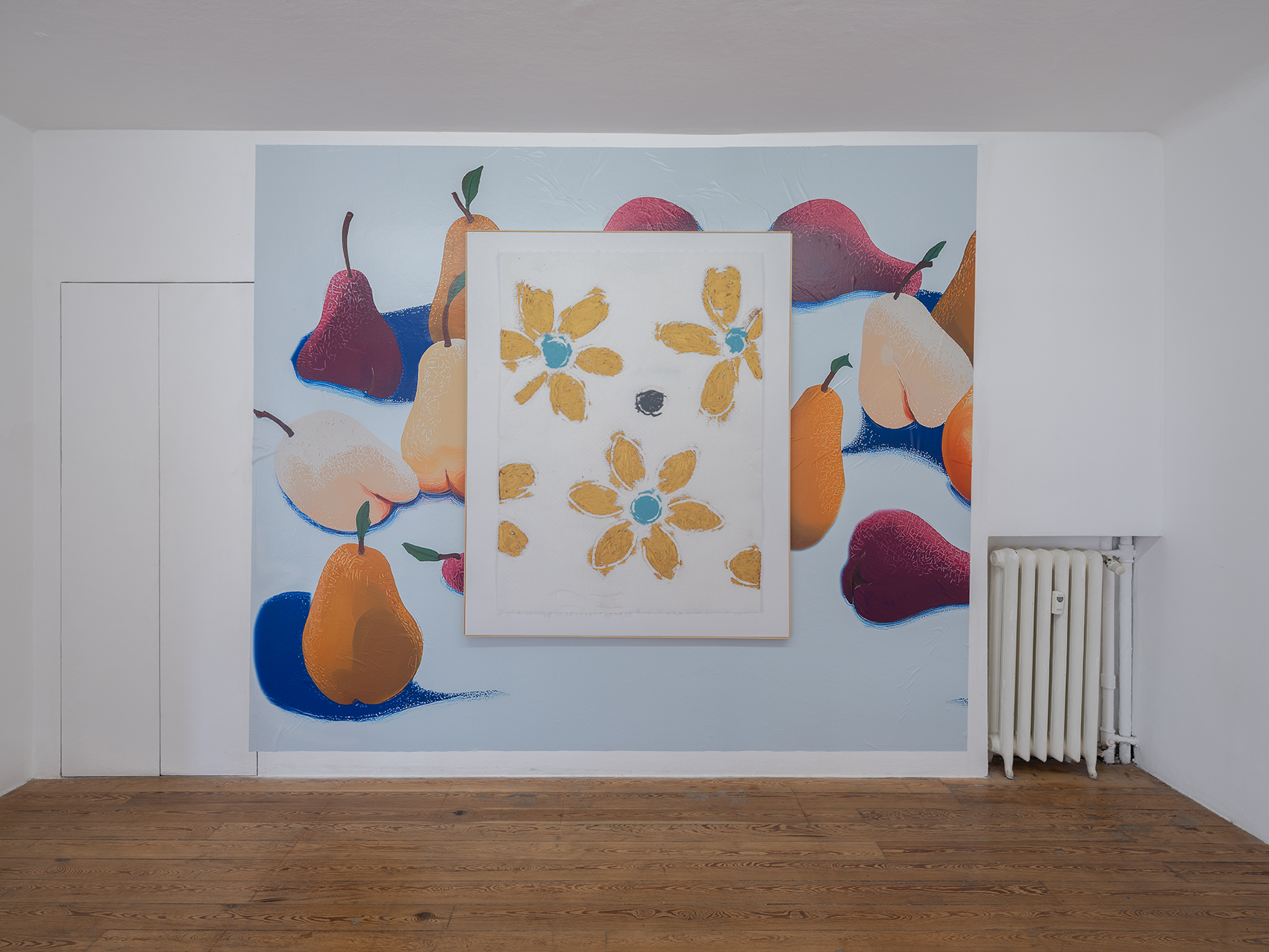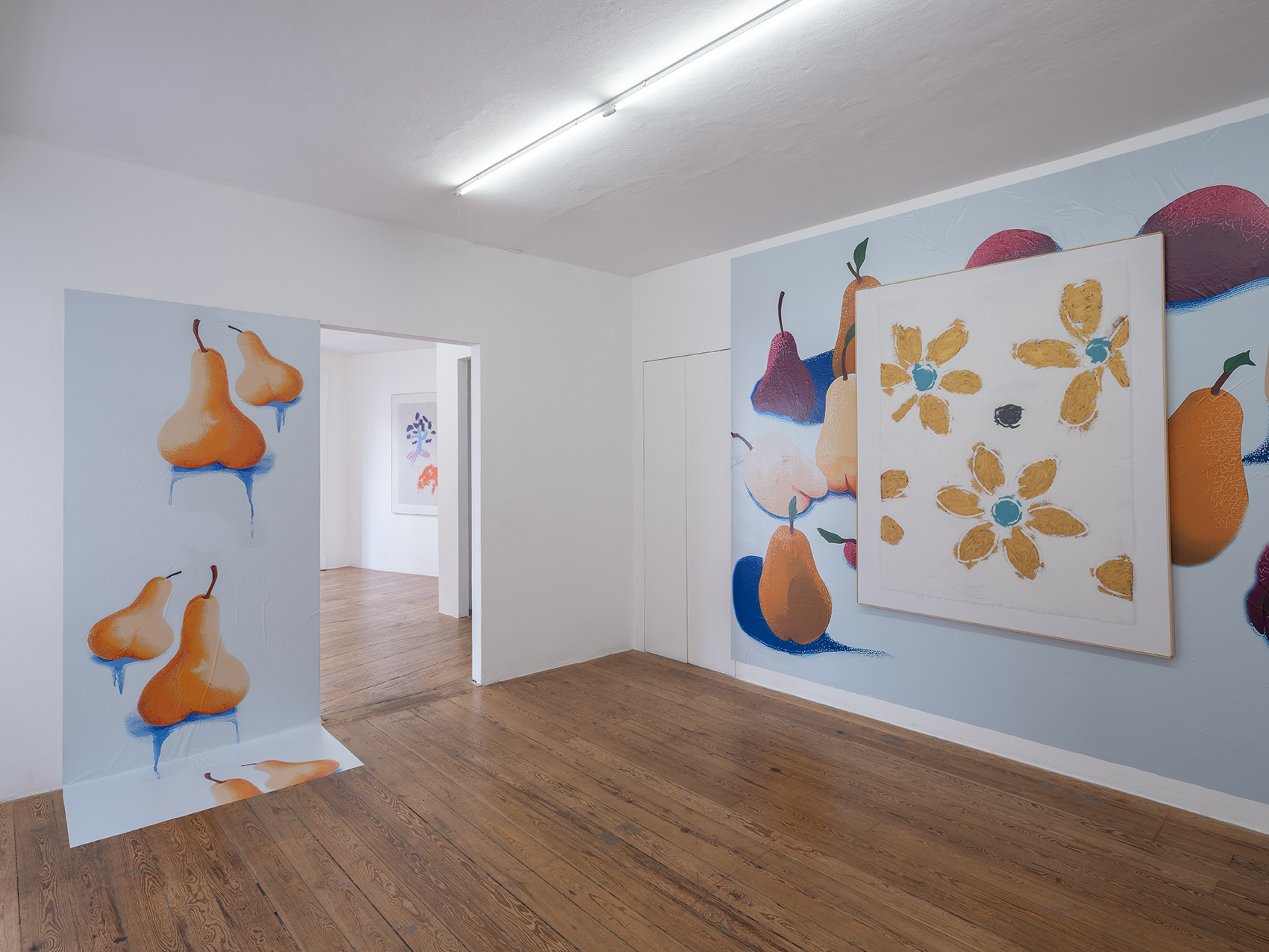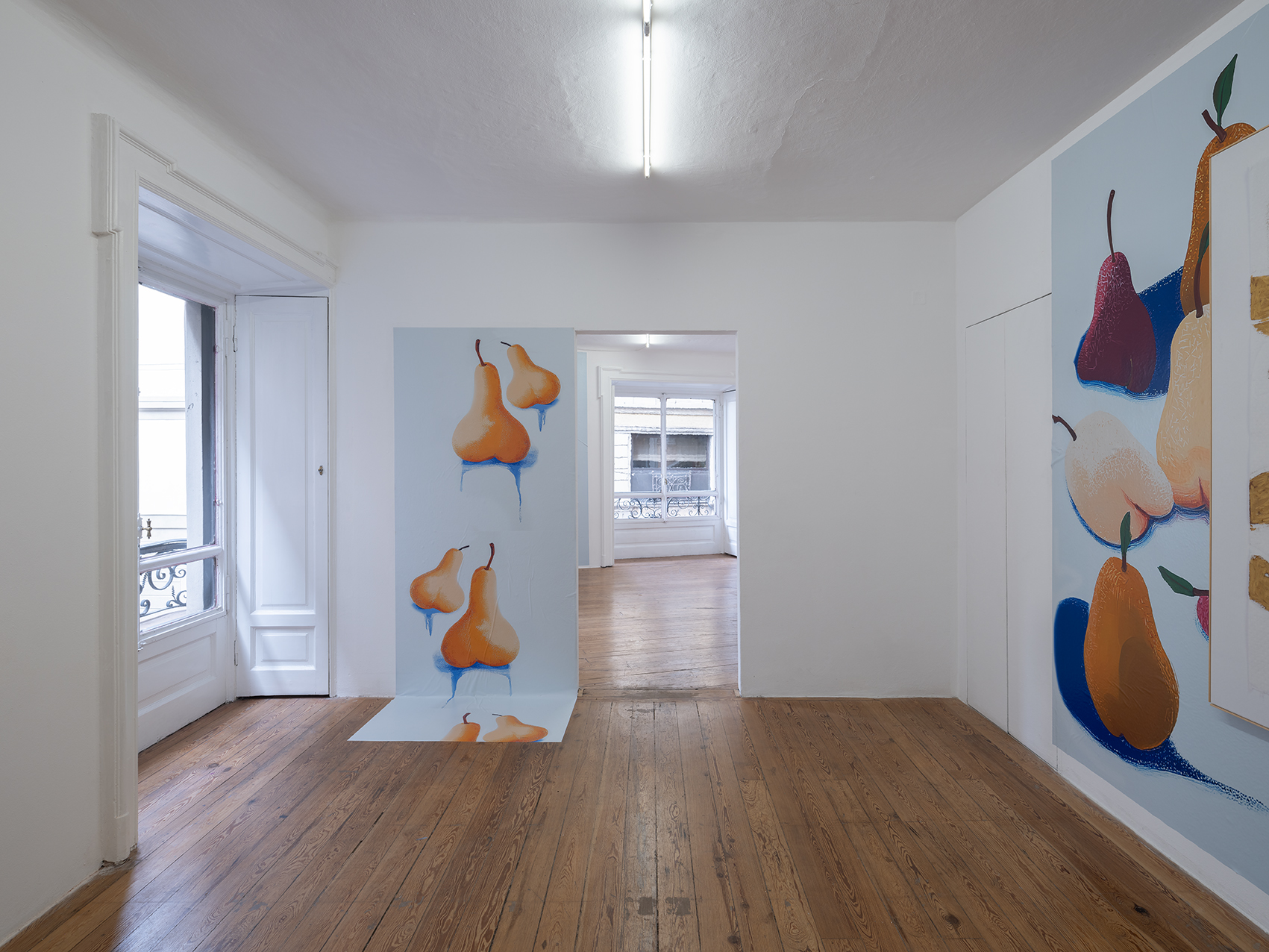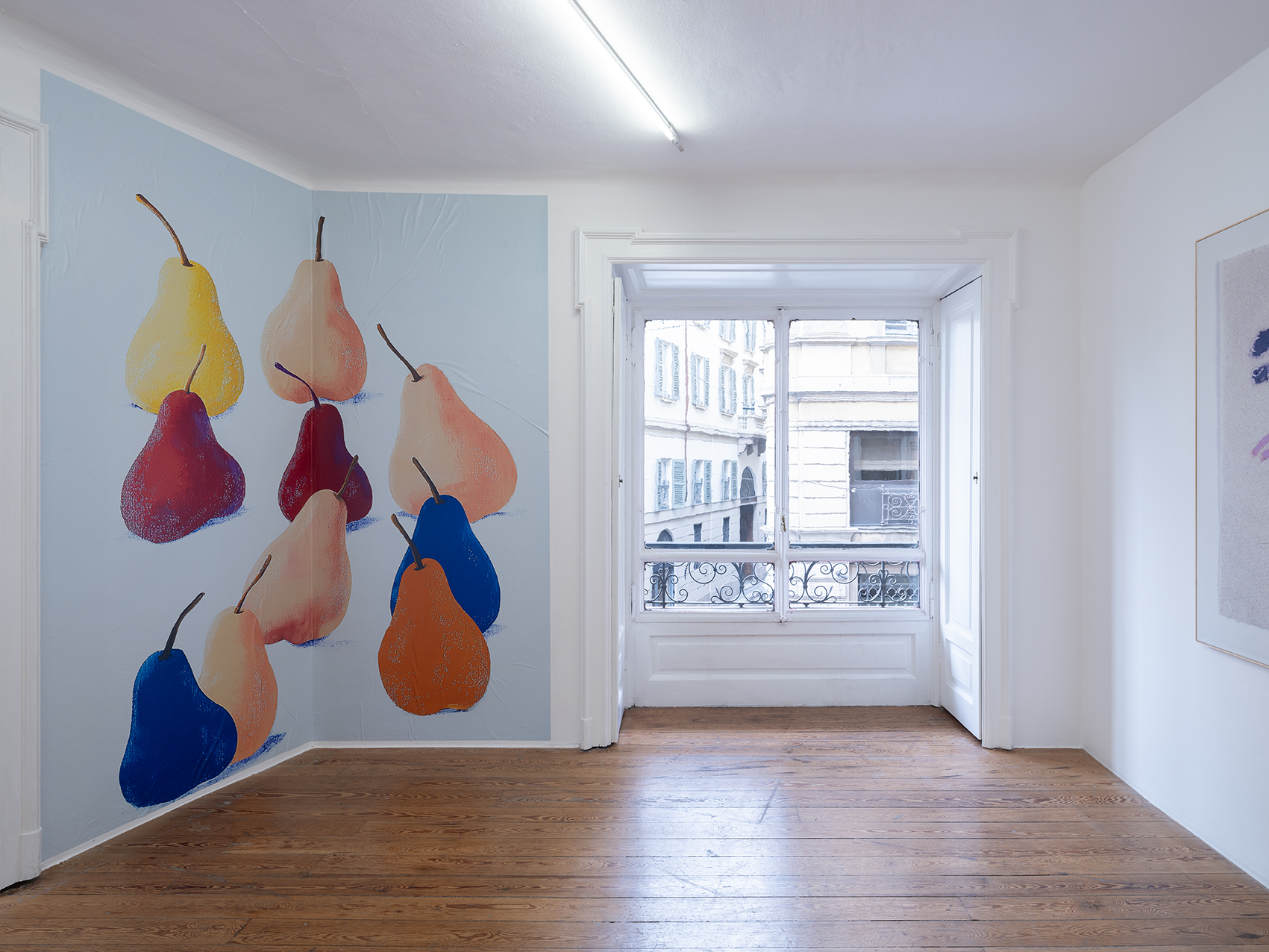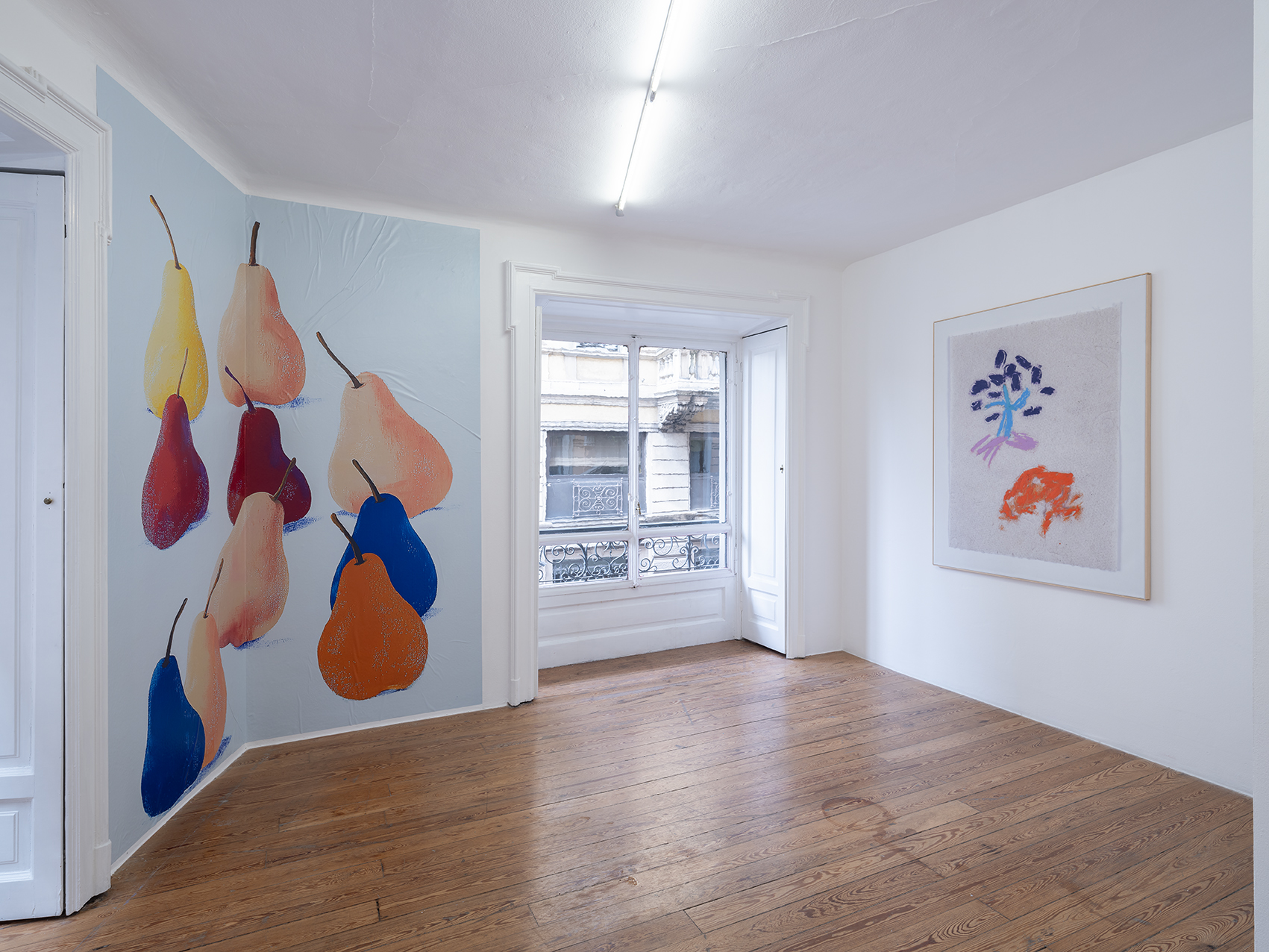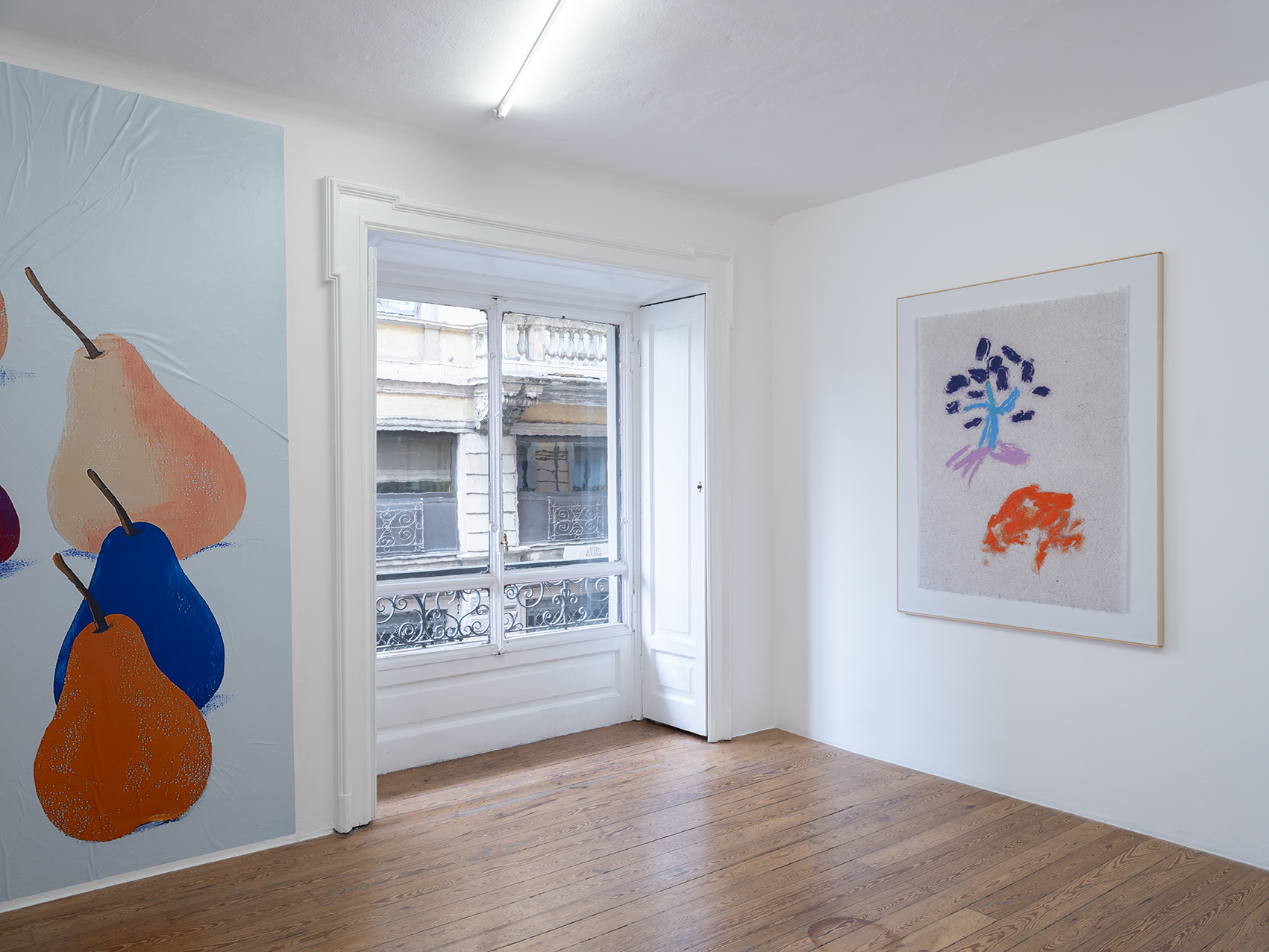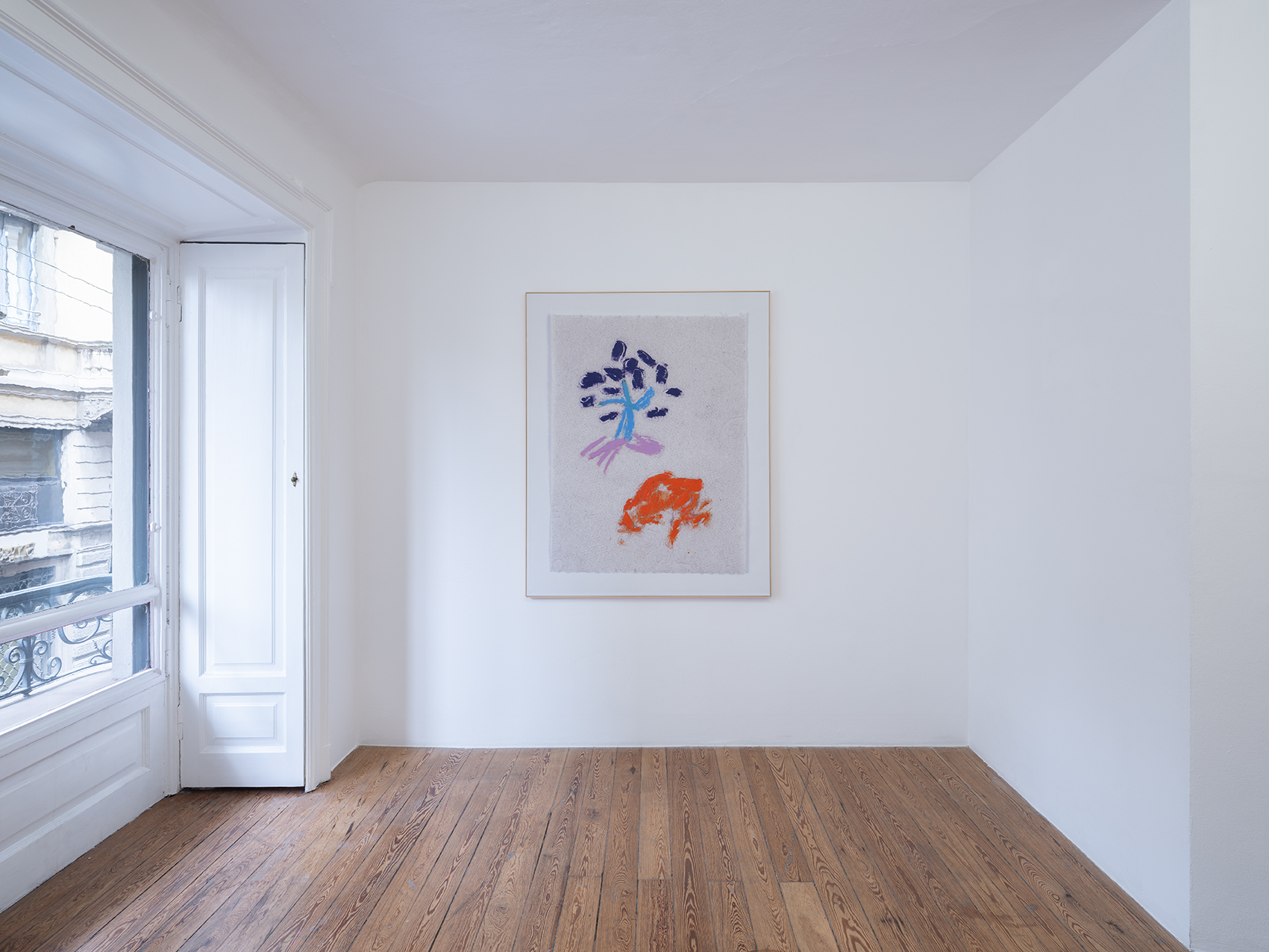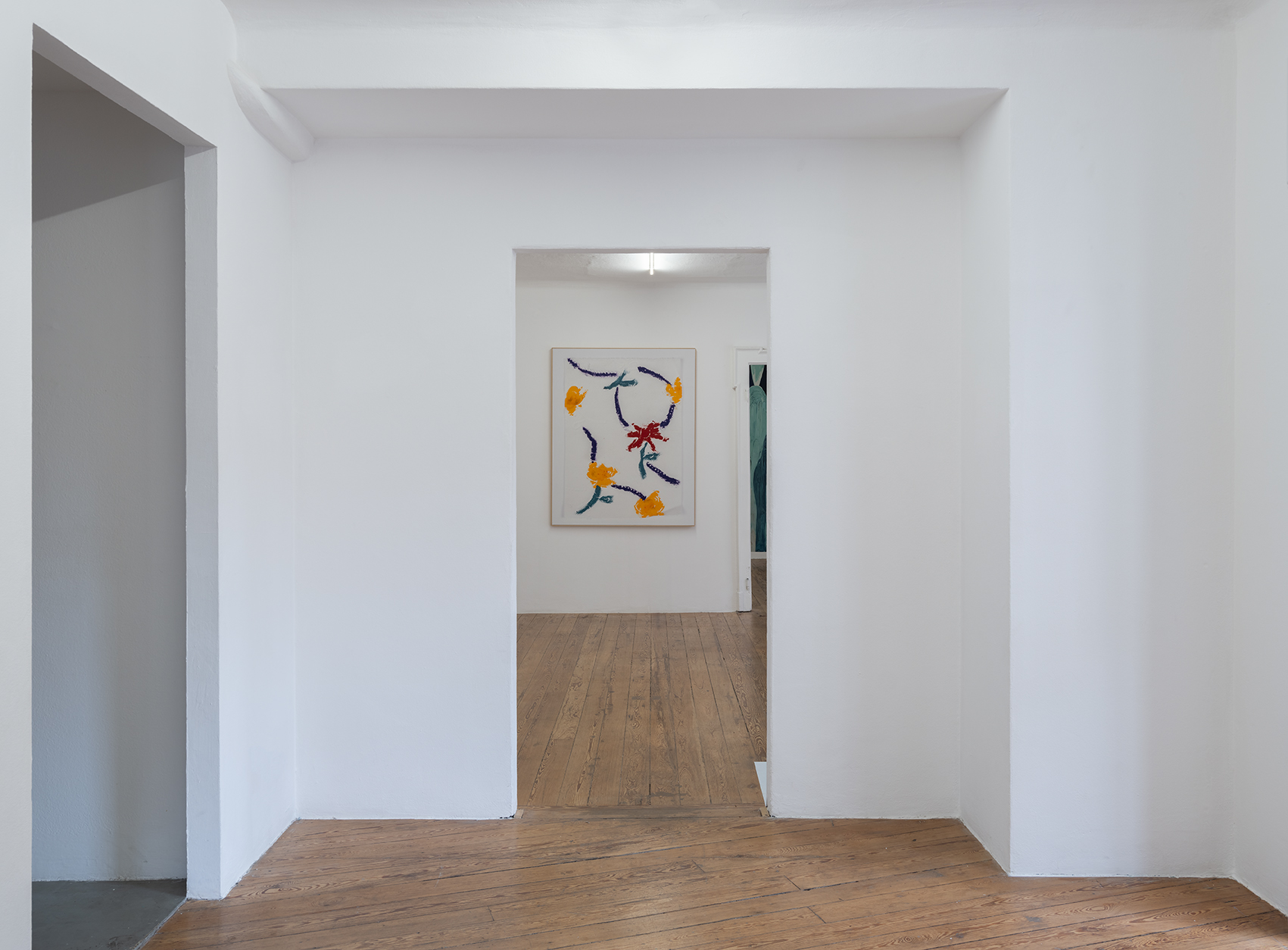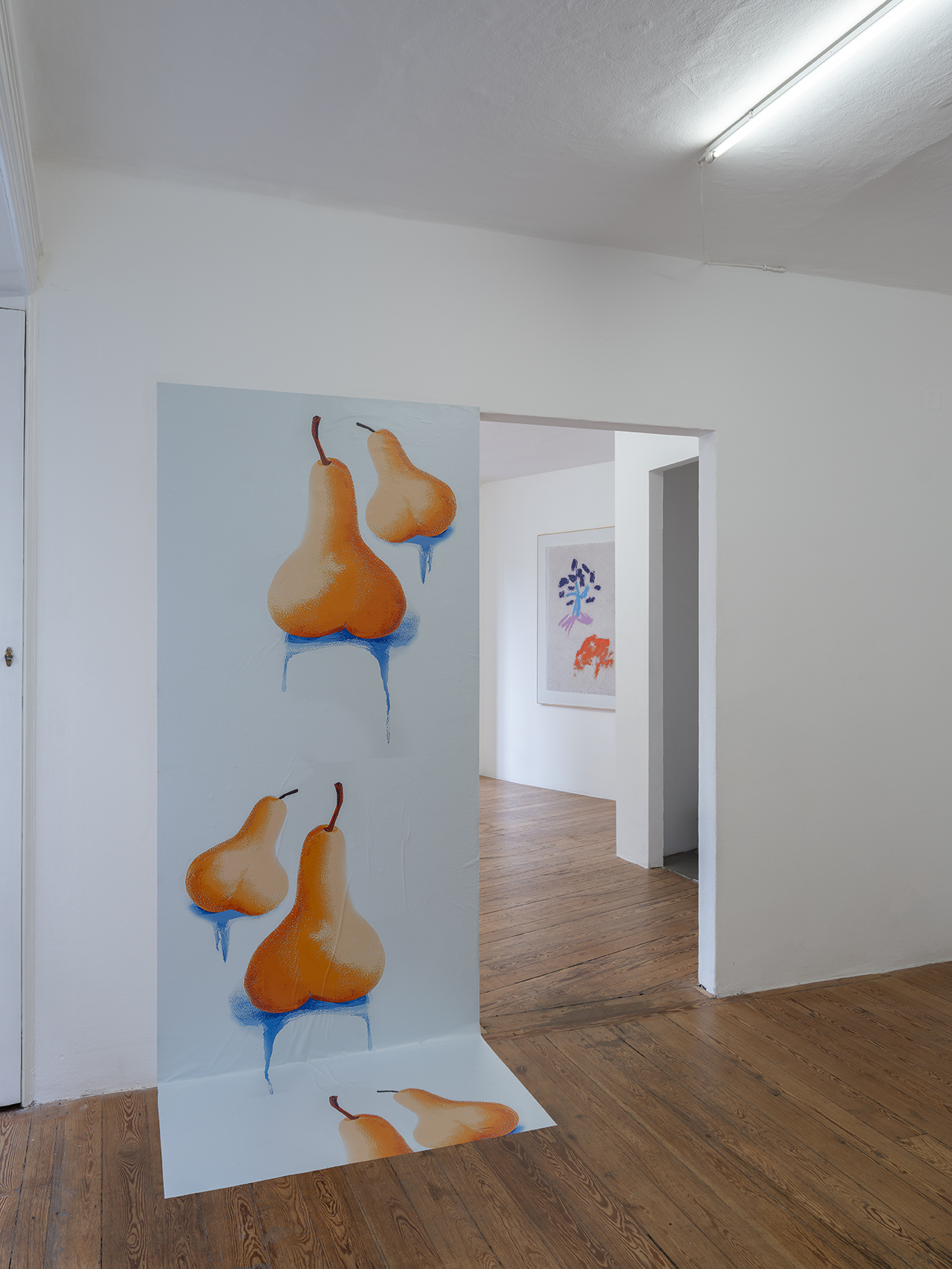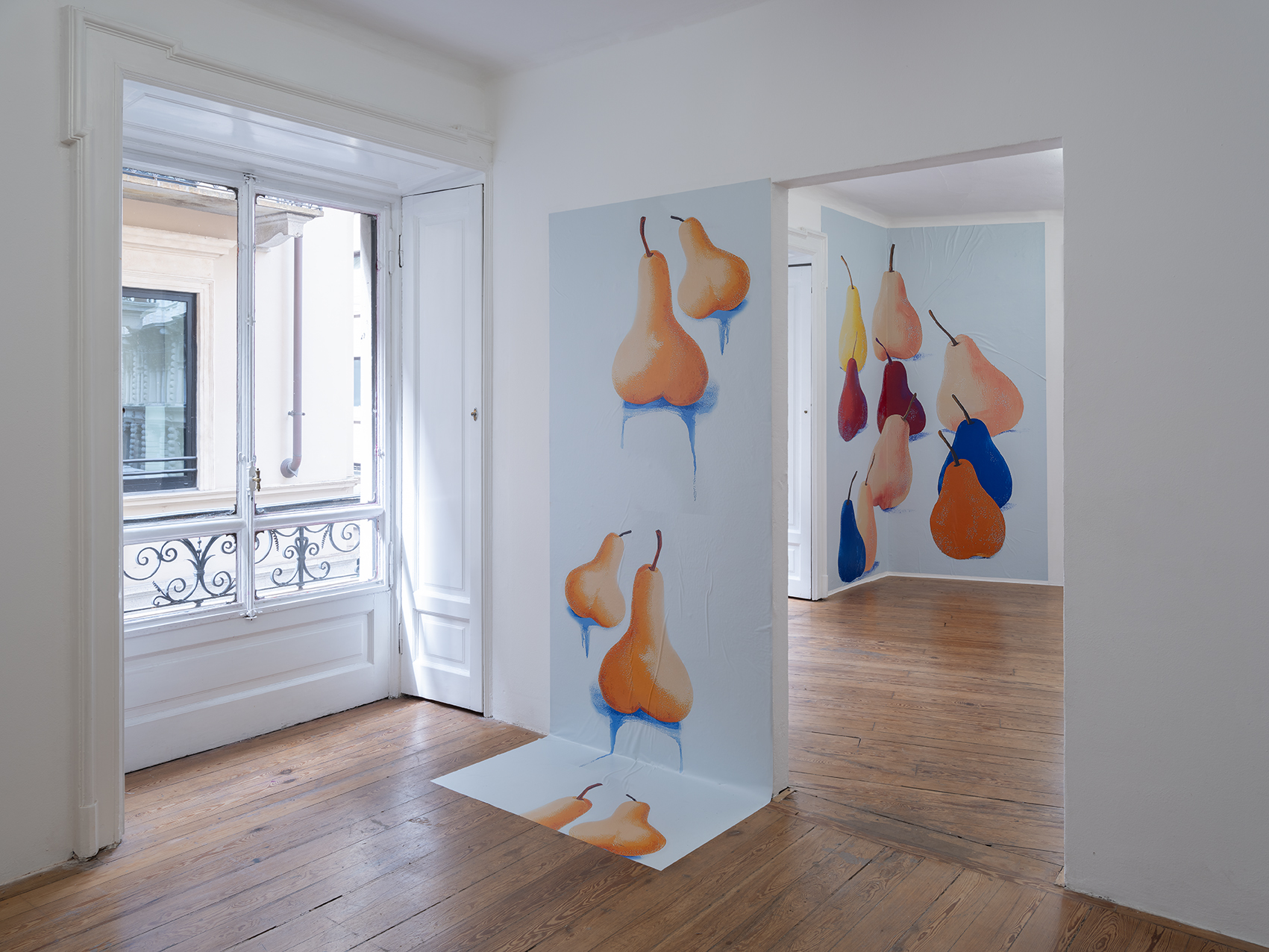Kaspar Müller
when we turn, we reappear
September 18 - October 18, 2024
Kaspar Müller
Untitled (Mandala), 2024
UV cured ink and Sennelier oil on canvas
150 x 120 cm
Kaspar Müller
Untitled (Mandala), 2024
UV cured ink and Sennelier oil on canvas
175 x 140 cm
Kaspar Müller
Untitled (Mandala), 2024
UV cured ink and Sennelier oil on canvas
150 x 120 cm
Kaspar Müller
Untitled (Mandala), 2024
UV cured ink and Sennelier oil on canvas
175 x 140 cm
Kaspar Müller
Untitled (Mandala), 2024
UV cured ink and Sennelier oil on canvas
150 x 120 cm
Kaspar Müller
Untitled (Mandala), 2024
UV cured ink and Sennelier oil on canvas
150 x 120 cm
Kaspar Müller
Untitled (Mandala), 2024
UV cured ink and Sennelier oil on canvas
175 x 140 cm
Kaspar Müller
when we turn, we reappear, 2024
Installation view, Galleria Federico Vavassori
Kaspar Müller
when we turn, we reappear, 2024
Installation view, Galleria Federico Vavassori
Kaspar Müller
when we turn, we reappear, 2024
Installation view, Galleria Federico Vavassori
Kaspar Müller
when we turn, we reappear, 2024
Installation view, Galleria Federico Vavassori
Kaspar Müller
when we turn, we reappear, 2024
Installation view, Galleria Federico Vavassori
Kaspar Müller
when we turn, we reappear, 2024
Installation view, Galleria Federico Vavassori
Kaspar Müller
when we turn, we reappear, 2024
Installation view, Galleria Federico Vavassori
Kaspar Müller
when we turn, we reappear, 2024
Installation view, Galleria Federico Vavassori
Kaspar Müller
when we turn, we reappear, 2024
Installation view, Galleria Federico Vavassori
Kaspar Müller
when we turn, we reappear, 2024
Installation view, Galleria Federico Vavassori
Kaspar Müller
when we turn, we reappear, 2024
Installation view, Galleria Federico Vavassori
Kaspar Müller
when we turn, we reappear, 2024
Installation view, Galleria Federico Vavassori
Kaspar Müller
when we turn, we reappear, 2024
Installation view, Galleria Federico Vavassori
Kaspar Müller
when we turn, we reappear, 2024
Installation view, Galleria Federico Vavassori
Kaspar Müller
when we turn, we reappear, 2024
Installation view, Galleria Federico Vavassori
Kaspar Müller
when we turn, we reappear, 2024
Installation view, Galleria Federico Vavassori
Kaspar Müller
when we turn, we reappear, 2024
Installation view, Galleria Federico Vavassori
Kaspar Müller
when we turn, we reappear, 2024
Installation view, Galleria Federico Vavassori
- 2025
-
2024
-
Giangiacomo Rossetti
Squeeze
November 29, 2024 - January 10, 2025 -
Ganz kleine
November 6 - November 22, 2024 -
Kaspar Müller
when we turn, we reappear
September 18 - October 18, 2024 -
Gianni Piacentino
June 25 - July 25, 2024 -
Vincent Murnaghan
Tuscan Landscape Painting
May 22 - June 18, 2024 -
claude rutault
March 12 - April 26, 2024
-
-
2023
-
The 3-second rule of thumb
Curated by Kaspar Müller
December 15, 2023 - February 2, 2024 -
Daniele Milvio
Le Faremo Sapere.
September 21 - October 27, 2023 -
Charlemagne Palestine, C'ERAA UNAAA VOLTAAA CHARLEWORLDDD
June 6 - July 7, 2023 -
Bill Hayden
café Uranus
May 4 - 31, 2023 -
Gianni Piacentino
March 22 - April 23, 2023
-
Emil Michael Klein
January 17 - February 17, 2023
-
-
2022
-
Osama Al Rayyan
knights
November 9 - December 16, 2022 -
Rochelle Goldberg
Ghost Centrale
September 16 - October 21, 2022 -
Beatrice Marchi
Who crushed the Evil Turtle?
June 8 - July 29, 2022 -
Kaspar Müller
Maintenance 2
March 30 - May 13, 2022 -
6 Bagatelles
Osama Al Rayyan
Beatrice Marchi
Daniel Murnaghan
Matthew Pang
Giangiacomo Rossetti
Cinzia RuggeriFebruary 15 - March 18, 2022
-
- 2021
-
2020
-
PaJaMa (Paul Cadmus, Jared French, Margaret Hoening French)
September 25 - November 15, 2020
-
Jared Madere
In the back of the restaurant I made him kiss the ring: Haunted House in the Key of New Years
Paths to G-ddess~ Tiny Dick Timmy Ricochet~ Live from the Geomancer’s Clit Ring
You say one thing and everyone acts like you don’t mean the opposite of it at the same time tooFebruary 13 - March 27, 2020
-
-
2019
-
Renata Boero
Tempo e Tempi
November 15, 2019 - January 10, 2020 -
Doriana Chiarini
IN GRANDE! Scultura a dismisura
Curated by Mariuccia CasadioSeptember 18 - October 31, 2019
-
Cinzia Ruggeri
la règle du jeu?
June 25 - August 9, 2019 -
Genoveva Filipovic
May 14 - June 20, 2019 -
Emil Michael Klein
Curtains
March 15 - April 19, 2019 -
Daniel Murnaghan
February 8 - March 9, 2019
-
-
2018
-
Dario Guccio
Urnas plebeyas, túmulos reales
December 14, 2018 - January 25, 2019 -
Michael Pollard, Eric Schmid
Life is good
October 26 - November 24, 2018 -
Daniele Milvio
A Milano non si usa
September 14 - October 12, 2018 -
Tra l'inquietudine e il martello
July 16 - August 11, 2018 -
Rochelle Goldberg
1000 "emotions"
May 25 - June 30, 2018 -
Green Tea Gallery at Federico Vavassori
Amore Atomico di Amore di Lava
Curated by United BrothersApril 18 - May 19, 2018
-
Bill Hayden and Greg Parma Smith
Legend of Festival and Enclosure
March 16 - April 15, 2018 -
Cinzia Ruggeri
Umbratile con Brio
Curated by Mariuccia Casadio
February 9 - March 10, 2018
-
-
2017
-
Kaspar Müller
Maintenance
December 21, 2017 - January 27, 2018 -
Lisa Ponti
IL
FOGLIO
È UNA STANZA
CHIUSA
MA
MERAVIGLIOSASeptember 15 - October 14, 2017
-
Genoveva Filipovic & Daniel Murnaghan
May 25 - July 1, 2017 -
Rosa Aiello
27 seasons
March 29 - April 29, 2017 -
Giangiacomo Rossetti
KRIS
February 16 - March 18, 2017 -
Matthias Gabi
January 12 - February 11, 2017
-
-
2016
-
Matthew Watson
Surplus to Requirements
November 25 - December 23, 2016 -
Dario Guccio feat. Andrea Cleopatria
Referendum sull'aeroplano
October 25 - November 19, 2016 -
Erika Landström
CONTROL I'M HER
September 9 - October 8, 2016 -
Benjamin Horns
May 25 - June 25, 2016 -
Emil Michael Klein
April 06 - May 14, 2016
-
-
2015
-
Daniele Milvio
Cacafoco
November 9 – December 5, 2015 -
Matteo Callegari
September 17 – October 24, 2015 -
Rochelle Goldberg
The Cannibal Actif
June 5 – July 4, 2015 -
Mélanie Matranga / Oliver Payne
Organized by Fredi Fischli and Niels Olsen
April 10 – May 9, 2015 -
Dario Guccio
Hammer, Chewing Gum, Evasion, Destruction
January 16 – February 14, 2015
-
- 2014
- 2013
- 2012
- 2011
To Live and Play with(in) Limits 2
The latest update in artificial intelligence, as Vittorio, the victorious one, assures me, represents a significant leap forward. Actually, he said, there is a nearly revolutionary advancement with each iteration. Vito, whom Edo—the director of Federico’s gallery—introduced me to, has been steering me through this high-speed development for a fruity sticker/background theme. I find myself intrigued by the individual contributors behind this evolving project, wanting to acknowledge their roles within this dynamic journey, reminiscent of 2020, when the project's story first began. This digital age synthesis of AI feels both organic and disconcertingly mechanical, paralleling the processes in art, and the feeding and excreting will bring us directly back to the initial topic. But lets see about the output later on.
Graham Hermann's notion that “Mistakes need to be cleaned up, but that is not the primary engine of personal or collective intellectual progress. What really lies beneath our feet at each moment is not a usefulness, but an inaccessible netherworld that we can use because it is there. It is the Empire of the Capital X,” resonates deeply here, emphasizing that our engagement with these processes is not solely about refinement or confrontation, but about tapping into a deeper, often overlooked realm of creativity and possibility. It applies not only to the exceptionally speculative field of art, but also to humanities, science and personality. Especially as the tendency towards a deadly confrontation between regression on the one hand and a spiraling death drive on the other is threatens our globalized humanity, as Julia Kristeva famously had put it (in The Dead Father, at a two-day international symposium April 29-30, 2006, Low Library Rotunda, Columbia University).
Yet, is it (once again) the figure of a child who offers a salvation? In a ironic twist this little story of my daugthers creations emphazises the secret and troubling fascination that European and American cultures, shaped by Christianity, have held for over two thousand years. Psychoanalysis is perhaps better than art (and any other mode of thought) to offer an interpretation of this fascination, along with the religious hold that has persisted throughout history. But, its a girls work, as Jessi Khavedi points out in her first press release, which streches the bond between psychoanalysis and christianity through her adaption of the one of the most western sancturies/ products; that of (now colored) toiletpapers.
But a short excursus beforehand: The history of hygiene and toilets traces back to ancient civilizations like the Indus Valley, Romans, and Greeks, who developed primitive sewage systems. However, the roots of hygiene practices can be found much earlier in human culture. Early tribes likely developed basic hygiene strategies as a matter of survival, using natural resources like water and leaves to maintain cleanliness. These practices were communal and closely tied to the environment, with early humans designating specific areas for waste disposal to prevent the spread of disease.
As societies became more complex, hygiene evolved into a structured system, with cities like those in the Indus Valley building the first known sewage systems. Modern toilets began to emerge in the 16th century, eventually leading to flushable systems by the 19th century. Early methods for cleaning oneself after defecation varied widely—stones, leaves, water, or cloth were common. Toilet paper, invented in China in the 6th century, became commercially available in the 19th century.
Toilet paper's environmental impact is significant due to deforestation and water-intensive production. Many countries, particularly in Western regions like Europe, rely on it, while others, such as in Asia and the Middle East, use water-based cleansing methods like bidets. Around 70-75% of the world prefers alternatives. Especially in Europe where the fear of running out of toilet paper usually reflects a psychological attachment to cleanliness and comfort, it is also linked to the early "anal stage". Toilet paper symbolizes control and order, and its absence provokes anxieties around chaos, loss of control, and even humiliation, heightening the feelings of vulnerability. The desire for control is deeply rooted in human psychology, but humans also have a tendency toward perversion—a fascination with breaking societal rules and exploring taboos. The idea of losing control, whether in small acts like running out of toilet paper or in more dramatic ways, can evoke a mix of anxiety and attraction, as it disrupts the rigid boundaries that govern social and personal behavior, sparking curiosity.
Back in 2020, the exceptional political and medical circumstances, the different collaborators, the multiple authors, the intrafamilial relationships and complications, the stages of a child's creative development, the concept of ready-made and appropriation art, ideas about industrial design, fine art, and ornament/mandala as well as the mentioned above context through the chosen motif—all —I embraced rather than resisted. It was a fortunate opportunity, and it became a lesson for me not only in artistic efficiency but also in personal acceptance and in understanding. The blend of truth and cliché, complexity and simplicity, along with this profane motif elevated to a level of immense economical value in the form of painting, made it feel as though we were literally dismantling the foundation. Yet, I believe it saved something vital.
In March of the same year, a PDF appeared offering digital tracings of photos by Louise Lawler. People could print the file at home and use the pages as a coloring book. The source photos date from as early as 1984, and Lawler’s titles indicate when she ‘adjusted’ the images ‘to fit’ new formats and times. Such is the case with “Hand on Her Back (traced),” 1997/1998/2013, which shows a plaster cast of a crouching Aphrodite seen from behind, her head absent. The disembodied hand of a similarly absent cupid is settled in the small of her back. The sculpture is poised on a wheeled, wooden dolly, signaling how artworks move in and out of storage and circulate through exhibitions and as images. The question of image rights, which Lawler's photos of other artists' works have long stood at the limit of the law, in recent years drew the attention of museums looking to monetize their holdings in new ways. For the moment, though, the issue seems to have been tabled, as museums—like MoMA, which posted this print-at-home coloring book—reconsider their relation to (paying) audiences sheltered in place.
John Beeson continued in 2020: “At home in her family’s Berlin apartment weeks later, six-year- old Katharina reinvented the coloring book. She took the oil sticks that her artist-parents bought her, and colored in the decorative shapes and flowers perforated into a sheet of toilet paper. An innovative, do-it-yourself approach, the drawing is both joyful in its child-eyed creativity and economical in its means. Katharina proudly showed her creation to her father, Kaspar Müller, who acknowledged the art in it. Encouraged, Katharina embarked on several more toilet paper drawings. Müller had these photographed and printed digitally in large format, after which he drew on top of them with oil sticks. The image-object-drawing hybrids in the series “Mandala” expand and complicate, in a self-conscious form, Katharina’s unselfconscious creation. In religious practice, mandalas are a focal point in meditation or ephemeral offerings produced through sustained concentration. New Age appropriations of them push the limits of what’s acceptable. Here, Müller stipulated the production process, but he shares authorship with his daughter as well as the manufacturers of the toilet paper. The large-scale works emphasized the embellished pattern, but also the object-like quality of the paper sheet, including at times tattered or lightly torn edges.
Müller relates his procedure to Notrecht, a Swiss-specific term referring to the suspension of democratic rights during a state of emergency. That’s what this work is from start to finish: a perceptive revaluing of material and activity under a state of exception, both in Katharina’s case and in Müller’s. In the past few months, families have stood as a renewed basis of social interaction, but families always bear responsibility when social infrastructure is inadequate; wherever the state withdraws from a paternalistic function. Not just through homeschooling, but in providing healthcare, by being accountable for intergenerational student debt, and increasingly, by offering housing and financial support with employment scarce—burdens borne unequally between communities. One thing “Mandala” speaks to is our experience of limits and the interdependency this relationship inevitably entails. Just as Katharina’s beautiful, vibrant drawings took form within existing bounds, familial bonds are what led to their recuperation via a familiar form—art, now on display.”
What began over four years ago, is now presented (with new works, still, from the same series) in Milan at the gallery of Federico Vavassori. I’m sharing this story for the first time in my own words, aiming for a blend of personal anecdote and intellectual reflection. A bit like Montesquieu’s true stories, I try to approach this tale with a touch of heart. I recall vividly the spring of 2020 when the pandemic brought an intense, albeit stifling, focus on our daily lives. It’s almost distasteful to revisit those memories now, as if acknowledging them makes one complicit in the era’s discomfort. But still, it remains shaped much more by individual experiences than by any collective narrative of it!
When Katharina first presented her colored toilet paper to my wife and me, her simple yet profound creations—first with roses, then butterflies—captured a unique blend. At this very moment, because of her age, she was in the transition stage of a creative development where coloring out was strained in favor of a more expressive approach, which led to this result. Soon after the initial euphoria, the enthusiasm disappeared, and a short time later, she was not even able to imitate it anymore.
For the sake of it and a bit naively, I was sharing these works on Instagram, another contributor to this story, and it was not much later that Daniel, my German gallerist, called me. From there, I have rarely experienced artistic collaboration in such a direct and fragile process; the fact that the small oil crayons in her hand were proportionally the same size as the expensive Sennelier oil crayons in my hand, which I used on the blown-up sizes, was heartfelt, as barely a few days later, the first toilet papers were mounted on canvas.
I remember how Marius and I raced like monkeys through an empty city of Berlin, Gabba Techno at full blast, the printer greeting us with arms outstretched and the words: “You are the only ones still working?” This chaotic and exhilarating period of creation felt like a surreal dance with the city, a danse macabre, a reflection of the intensity and absurdity of our artistic pursuits during those unprecedented times.
Katharina's original papers were photographed by a well-known fashion photographer, whose name I am not allowed to mention here. Placed on cotton wool, illuminated from all sides, the sheets were put in the right light in his studio. Since there was no school, I was often standing on the playground with the children when the bike courier showed up. I waved him over and pulled a small envelope with toilet paper out of my pocket and handed it to him. I felt seriously compelling, real, and relevant. 6 year old Katharina was keeping in suspense all of us grown up men trying to capitalize on her creation one way or another.
A few hours later, I was sitting at the computer and talking to the photographer on the phone as we tweaked the settings. Immediately afterwards, the data was taken to a photo studio, where it was prepared for a special printer located elsewhere. There it just had to be printed out, and we picked it up again, to be mounted on the chassis and worked over. As long as there weren't more than three people in a room, wearing masks, it worked—it was legal. Only a small number of the large amount of colored toilet papers were used because my daughter had a real burst of work, and after this rush, as I mentioned, rather quickly, it became a nuisance for her. I still have some in stock today though. There were never any further ones made. The work is literally indebted in its time.
As I now revisit the feedback and press, I remember how the exhibition made it to the front page of several print out newspapers, as journalists visited the show, naturally drawn to this motif and story. It was always important to me that this series will be shown again at a later date, which would allow a somewhat innocuous view and perhaps enable a less impulsive interpretation that goes beyond what happened at the time. I also have to thank Alessandro who contributed to this comback with a small and successful intermezzo in the late spring of this year.
My final wish would be to show these pictures, like Mark Rothko’s, in a church. The innocent, hopefully blossoming floral motifs offer a real sublimation that transcends visually but also through the many layers of this complext yet blantantly simple work.
For the first show, in a less religious interpretation, Peter Fischli wrote:
"More or less immediately, I had to think of a painting by Henry Wabel, Stilleben mit Kinderzeichnung. I remembered seeing this painting around 1969 in the collection of the museum in my hometown. I was 18 or 19 years old at the time and starting to think more and look more and more at art. Conceptual art was a new and fresh thing. So it was through the eyes of that momentum that I saw this painting—the idea of that painting as a conceptual artwork. I was enthusiastic about it, about the thoughts I was seeing in it. Everything was there—a kind of appropriation art avant la lettre, a readymade inside a painting, the question of authorship, and on top of it the questionable phantom idea of the authentic. I was, as they say, ‘illuminated’ by this painting. Time passed, I forgot about the painting, and illumination turned back into a dim bulb. I had to go back and do some research because I couldn’t even remember the name of the artist. During this little research, I stumbled across another painting, done a long time ago, like 500 years ago, by Giovanni Francesco Caroto.
Dear Kaspar, I am sure you will like that painting as much as I do."
The act of creating together symbolizes not only the passing of cultural and artistic values but also the negotiation of power and influence within the family. Our collaboration embodies a process of identification and projection. As I became more involved with her work later in the process—forcefully but permissively—I found myself questioning my role, not only as a parent and authority figure but also as an artist, reflecting on my own creative practice. At one point, my daughter literally commissioned me to create an exhibition for her, out of the practical realization that this was the only way her art would be showcased in a serious setting. It’s a complex, delicate, and fragile situation, and that’s what I mean when I say this story is true—true in a way that art shouldn’t be allowed to be, because if it were, it would no longer be distinct from life itself.
There are many aspects of it that can be intimidating, especially for an artist, but ultimately, it was a kind of liberation—particularly in these times—to follow the path of least resistance and slip through the narrowest of spaces. In the love-hate dynamic of transference, the father isn’t just loved and hated, killed and resurrected as the scriptures suggest. He is broken down, almost atomized, yet still absorbed. Am I the same one when I analyze and when I am analyzed? Yes, but...
It brings me back to another Graham Hermann quote, with which I want to conclude: "To create something does not mean to see through to its depths; we do not drain our children to the dregs by begetting them, but set them loose in the world like wild dogs, beyond our control and often beyond our knowledge."
